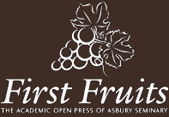Abstract
Bible commentators have traditionally supplied hierarchical outlines for the books they interpret under the assumption that texts are semantically structured, and that valid interpretation flows in part from accurately discerning textual structure. The disciplines of narrative criticism and discourse analysis have significantly advanced our understanding of textual structure, and have crossed paths by way of mutual influence with the IBS movement, which has given sustained attention to formalizing the study of textual structure. Against this backdrop, John 1:19-4:54 invites closer scrutiny in terms of the logic of its composition. The nearly universal agreement that 1:1-18 forms a clear literary unit, and that 5:1 begins another, contrasts with a lack of agreement about how to construe the intervening material. One popular view, that 2:1-4:54 is gathered as a literary whole by virtue of a Cana-to-Cana inclusio, falters under careful examination. According to the conclusions and introductions supplied by the narrator, 1:19-2:22 stands forth as cohesive unit devoted to presenting the Disciples as those who come to full and stable faith in Jesus. Likewise, 2:23-4:54 stands forth as a cohesive unit devoted to presenting Jesus as the Savior of all: Jews, Samaritans, and gentiles.
DOI
DOI: 10.7252/Journal.02.2014S.06
Recommended Citation
Dongell, Joseph R.
(2014)
"Discerning Segment Boundaries within John 1:19-4:54,"
The Journal of Inductive Biblical Studies:
Vol. 1:
Iss.
1, Article 6.
Available at:
https://place.asburyseminary.edu/jibs/vol1/iss1/6
